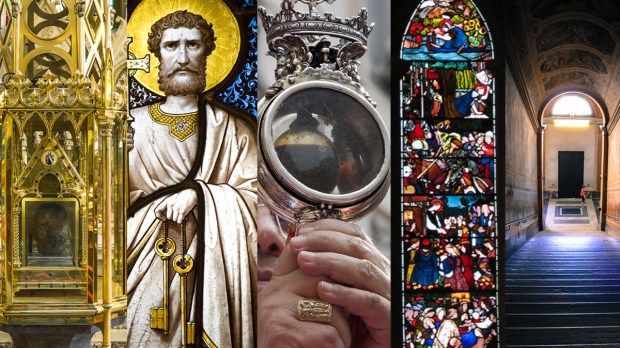Lenten Campaign 2025
This content is free of charge, as are all our articles.
Support us with a donation that is tax-deductible and enable us to continue to reach millions of readers.
Over the course of 2,000 years of Church history, Catholics have been captivated by countless miracles and mysteries. While some of these curiosities, such as the incorruptible saints and Eucharistic miracles, are familiar in popular Catholic culture, others are less well-known.
Here are five astounding and relatively unknown Catholic curiosities that have stumped scientists, historians, and even the faithful throughout the ages.
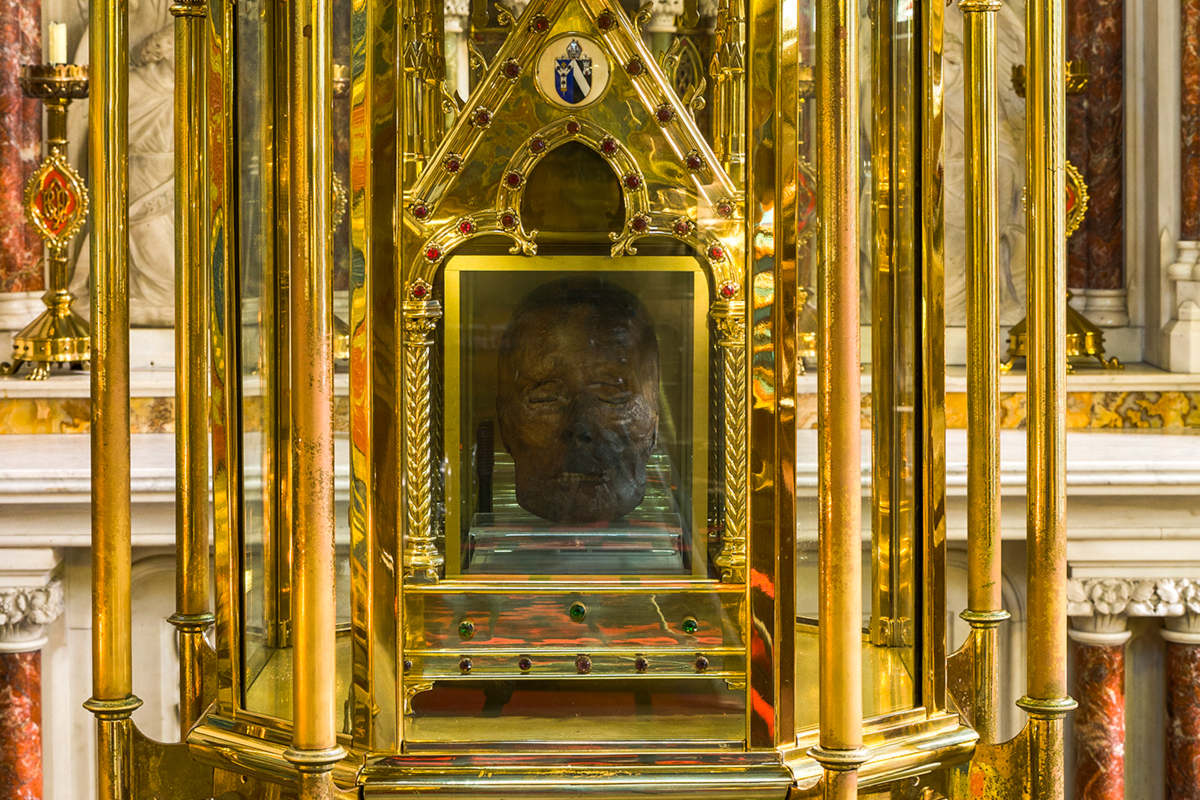
1) Oliver Plunkett’s Head – Drogheda, Ireland
Oliver Plunkett was the archbishop of Armagh and Primate of All Ireland during the 17th century. In 1681, he was executed for “treason,” i.e. for promoting the Catholic faith during the Protestant Reformation. He was hanged, drawn and quartered in Tyburn, England. His remains were eventually placed in various Catholic churches for veneration.
Now, imagine walking into a small, quiet church in Drogheda, Ireland, and suddenly coming “face to face” with a disembodied head displayed in a lovely glass case. The spectacle is shocking but also awe inspiring.
For those interested in paying a visit, St. Peter’s Church has a 5/5 rating on TripAdvisor.com and is ranked #1 out of the 26 things to do in Drogheda.
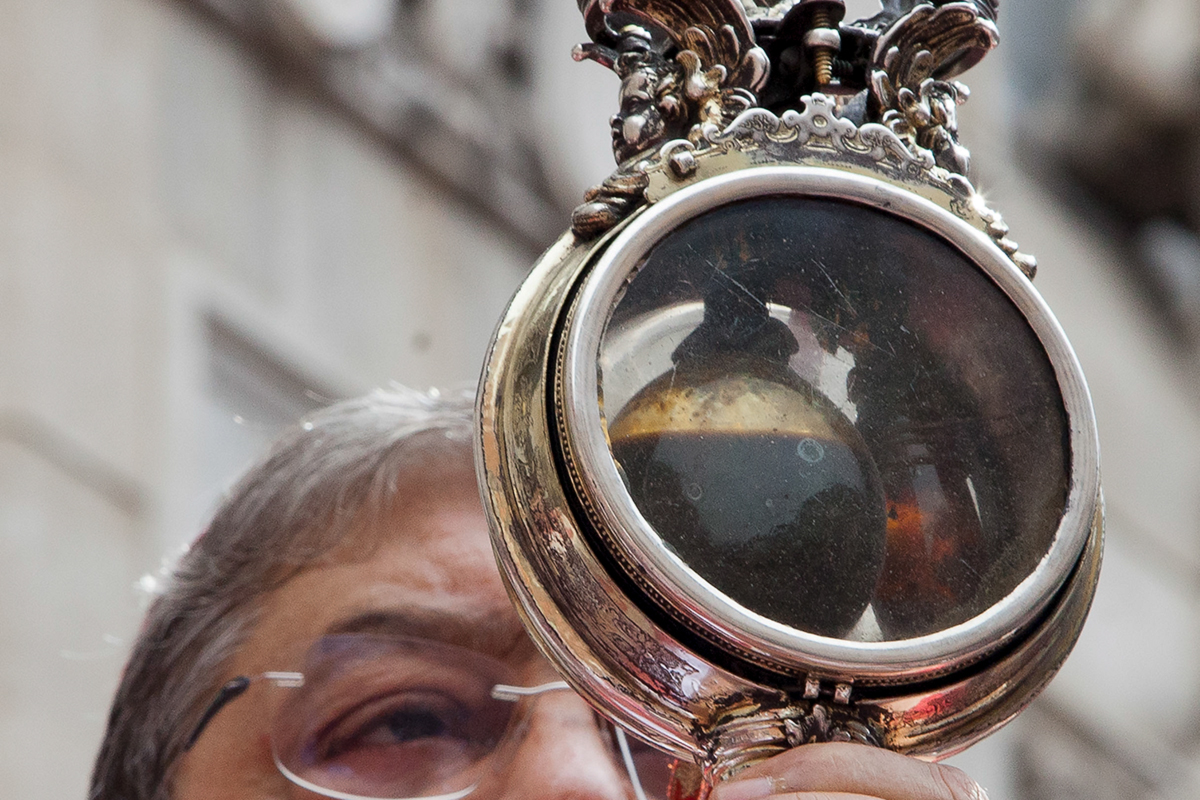
2) St. Januarius’ Blood– Naples, Italy
Naples Cathedral holds a vial of blood from an early Christian martyr, St. Januarius, a 3rd-century bishop. For most of the year the blood is dry, but miraculously it liquefies three times a year on days commemorating his life and impact.
The blood is also said to spontaneously liquefy at certain other times, such as papal visits. On March 21, 2015, Pope Francis venerated the dried blood during a visit to Naples Cathedral, saying the Lord’s Prayer over it and kissing it. Archbishop Sepe then declared, “The blood has half liquefied, which shows that Saint Januarius loves our pope and Naples.”
Francis replied, “The bishop just announced that the blood half liquefied. We can see the saint only half loves us. We must all spread the Word, so that he loves us more!”
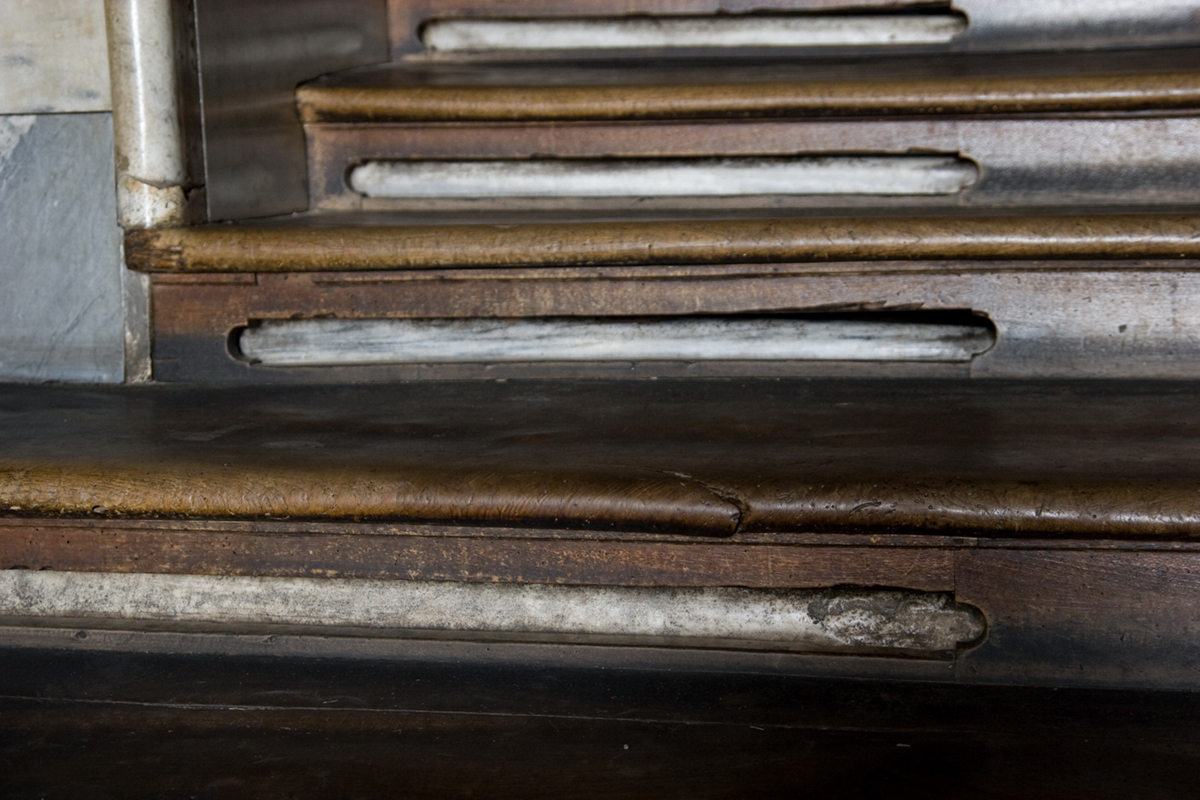
3) Holy Stairs – Rome, Italy
If you are in Rome and the famous Spanish Steps are too crowded by tourists, fret not. Consider visiting a less popular yet infinitely more significant set of marble stairs called the Scala Sancta.
According to tradition, these 28 stairs were transported from the praetorium of Pontius Pilate in Jerusalem and are the very steps that Jesus descended after being condemned to death. St. Helena, mother of Constantine the Great, brought the stairs to Rome around 326.
The idea of dismantling a marble staircase, then crossing an ocean, and finally reassembling it on another continent boggles the mind. What’s even more mind boggling is that pilgrims are permitted to ascend the Scala Sancta on their knees, a truly unforgettable way to follow the footsteps of Jesus even in the 21st century.
The Holy Stairs are today protected by a layer of wood, but there are a few “windows” cut into the wood so that pilgrims can see the actual marble beneath, and these little windows have a plastic layer as another way to ensure the marble is protected.
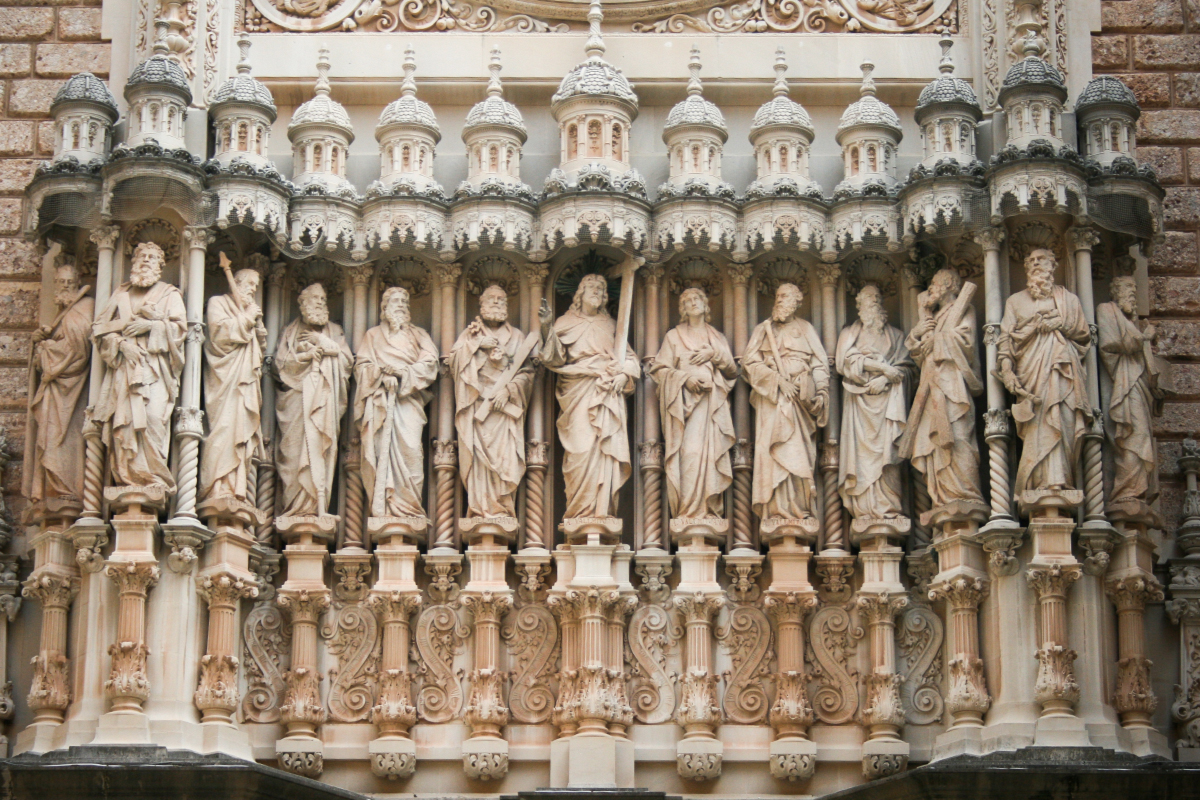
4) We Know Where the Apostles Are
“And he said to them, ‘Go out to the whole world; proclaim the gospel to all creation’” (Mark 16:15). When Jesus spoke these words to his apostles, they followed his command quite literally by going out to the whole known world at that time. Incredibly, the tombs of these holy apostles are located in various sites around the world, from Spain (St. James) to Turkey (St. John) to India (St. Thomas). The majority of the 12 apostles are buried in Italy, and while Peter gets the most attention in Rome, Bartholomew is the most accessible on an island in the Tiber River, where you can also find relics of new martyrs.
Read more: Among the modern martyrs of San Bartolomeo,
Consider a new travel bucket list: visit all the apostles’ tombs throughout the world.
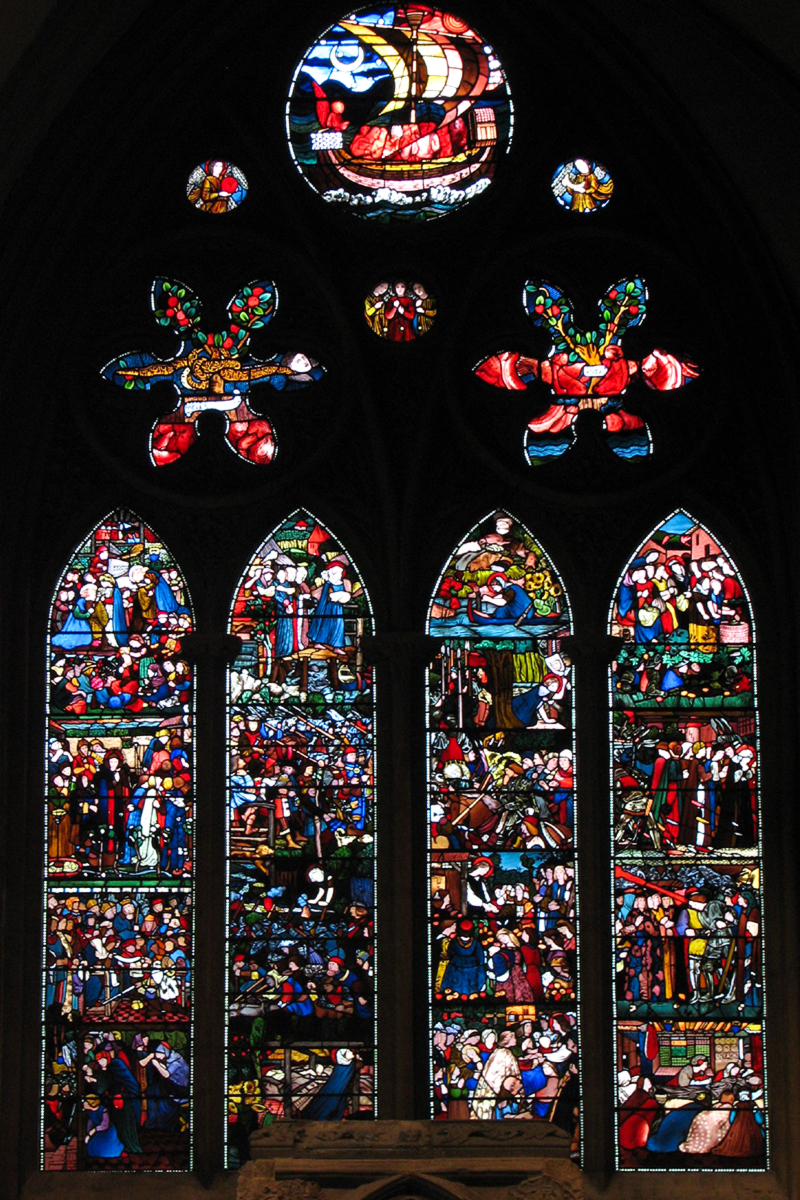
5) Saint Frideswide’s Toilet – Oxford, England
St. Frideswide’s tomb is found in a shrine in the Latin Chapel of Christ Church Cathedral. At the far end of the chapel, a stained glass window illustrates St. Frideswide’s life as a princess turned prioress. She lived from 650 to 727, but astoundingly, you can see a modern, Victorian-era flushing toilet in the stained glass panel showing her death.
Edward Burne-Jones completed the stained glass window in 1859, and his inclusion of a pink toilet in the medieval saint’s death scene is both ridiculous and puzzling. Some historians believe Burne-Jones was showing his sense of humor, while other experts suggest that the toilet was a request from his financial investors. With no facts or written explanation from Burne-Jones, one can only conclude that this mystery is just plumb(ing) crazy.
